Workshop formed bridge between energy and digitalisation research disciplines
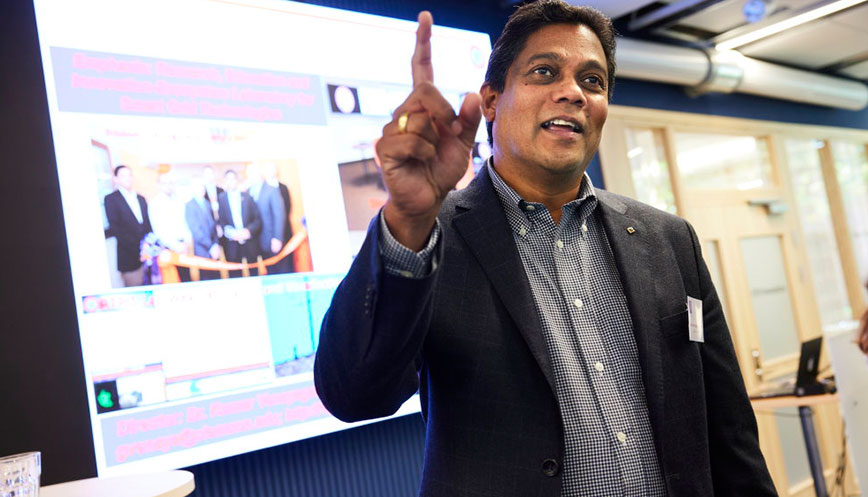
In September, KTH Energy Platform and KTH Digitalisation Platform held a joint half-day workshop entitled ‘Data-driven methods with energy applications’, which drew together experts and researchers from academia and business to share knowledge and experience.
The workshop was the premiere for a collaboration between KTH’s energy and digitalisation research platforms. The aim of the event was to share research and experience both between the two platforms and with international guests and representatives from business.
One of the day’s keynote speakers was Professor G. Kumar Venayagamoorthy from Clemson University.
“Workshops like this give us the opportunity to learn from each other. People in different parts of the world consider what I would call common global challenges. For example, how to electrify the economy and achieve carbon neutrality by 2050. Greater dialogue will enable us to work together to find solutions that are suitable for all different parts of the world,” says Venayagamoorthy.
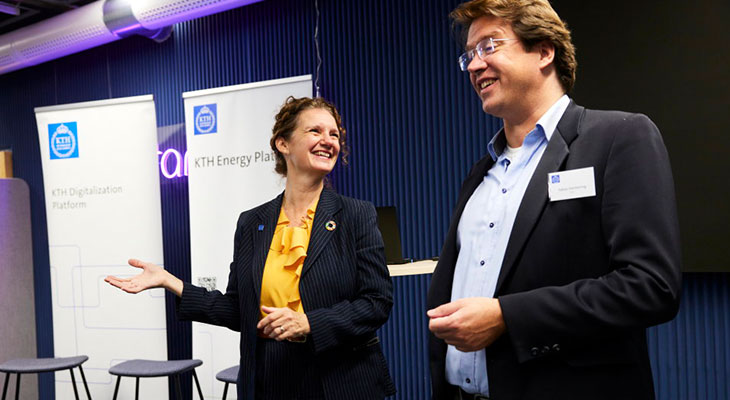
The day began with Lina Bertling Tjernberg, Director KTH Energy Platform, and Tobias Oechtering, Director KTH Digitalisation Platform, giving introductions to their respective platforms.
“Today’s workshop opens up opportunities for more interdisciplinary collaborations between our two fields. Many consider digitalisation as the path towards more sustainable energy grids, but it also poses several challenges such as greater complexity and additional threats to security of supply,” said Oechtering.
Standards for improved security of supply
During the first session, Torben Bach Pedersen from Aalborg University, gave a keynote speech about the FlexOffers system, which was developed with the aim of creating a standard for greater stability in electricity grids. The model makes it possible to benefit from changes in electricity consumers’ consumption patterns at scale, partly with the help of AI. At the same time, electricity consumers are offered financial incentives for their changes to their consumption behaviours.
The development of the model is ongoing as part of the EU-backed FlexCommunity network.
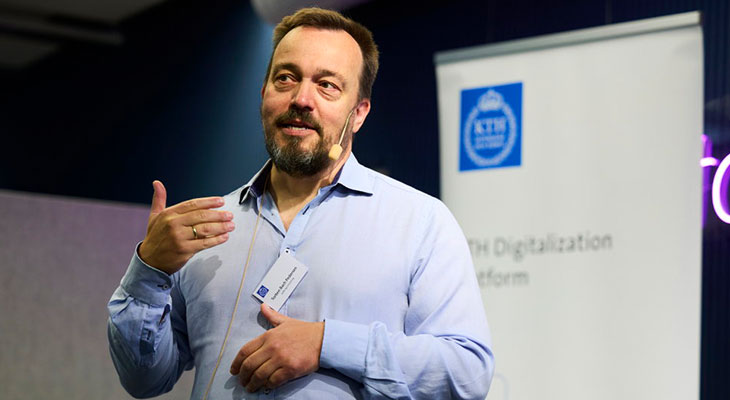
This was followed by shorter presentations by György Dán, a professor at KTH, and William Usher, a KTH lecturer. Dán spoke about how the use of AI and machine learning can strengthen smart grids. He particularly emphasised how it can improve security of supply.
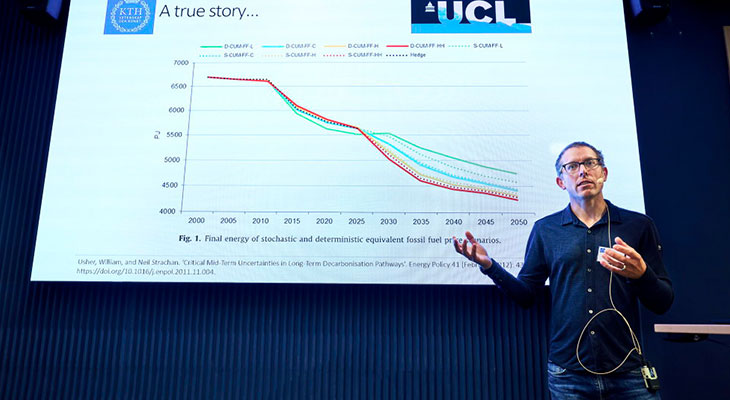
Usher highlighted the benefits of using planning optimisation models based on and distributed as open source with several examples from research. The rapid development of various optimisation models in recent years has also increased interest in open source code. At the same time, it is sometimes challenging and time-consuming to work with projects that develop in this way, he said.

Greater use of AI
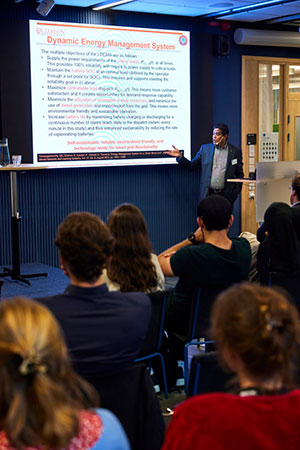
There was then a session entitled ‘Research on Energy Systems exploiting Digitalisation’ in which Venayagamoorthy gave a keynote speech. He touched on how greater use of AI improves the management of flexible loads and energy storage in today’s electricity system.
He particularly focused on the benefits of distributed AI and advanced computing technology to ensure uninterrupted electricity supply, and gave several examples of research where self-learning and communicating parts of systems improve systems as a whole. The increased use of virtual IoT devices can also improve cyber security, for example by initiating counterattacks from systems.
Then followed Olli Vigren, researcher at KTH, and Qianwen Xu, lecturer at KTH, with shorter presentations. Vigren highlighted the need for more tailored solutions to increase the digitalisation of the property sector. There is a need among property owners who want to reduce their costs and find solutions to integrate buildings into the electricity grid. To succeed, scalable solutions are needed that take into account the property market’s business models, he said.
Xu presented some of the difficulties with an increased share of renewable energy in the sustainable power system of the future. To address these challenges, smarter power converters are needed that can be used with different power grids. Xu presented her research into new data-driven modelling and co-ordination strategies for smart converters.
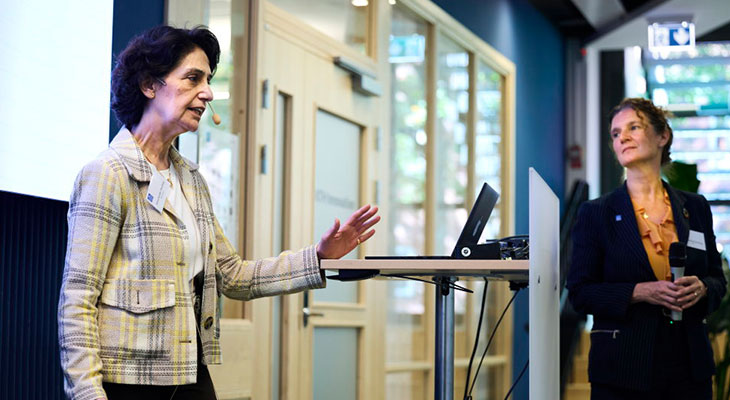
The need for collaboration
After a networking lunch, it was time for the last session of the day: ‘Society Aspects with examples from Industry and Living lab’, in which ABB’s Shiva Sander Tavallaey gave several examples of how the use of AI and sensor technologies made it possible to optimise energy use. ABB has built a digital system for Sara Kulturhus in Skellefteå that shares information with Skellefteå Kraft’s electricity grid. She also spoke about the need for collaboration to successfully create the comprehensive solutions needed for a sustainable future.
Then, Cecilia Gerlitz, Research Engineer at Vattenfall, highlighted new potential applications offered by smart electricity metres. Such metres make it possible to predict problems with real-time monitoring of load and consumption. Gerlitz called for new and more scalable solutions to manage and visualise all the data generated by metres in the network.

Digitalisation to reduce environmental impact
The last speaker of the day was Jonas Anund Vogel, Director of the KTH Live-In Lab, a centre where new technology can be tested and developed to fast-track the development of smart and sustainable buildings. He presented the new DIG-IT Lab venture, which conducts research to reduce the environmental impact of buildings through digitalisation.
Vogel talked about the need for digital twins and better digital platforms to enable more actors to share data from single sensors. He also pointed to the benefit of sharing information throughout a building’s entire lifecycle.

Finally, Vogel, Gerlitz and Tavallaey participated in a panel discussion in which they called for more flexible regulations to increase experimental activities and collaborations, and the need for more meetings such as the workshop to increase opportunities for collaborative projects and the exchange of knowledge and experience.
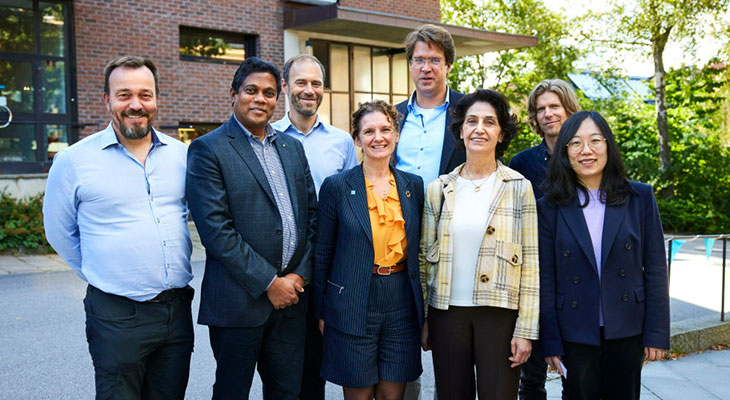
Text: Magnus Trogen Pahlén
